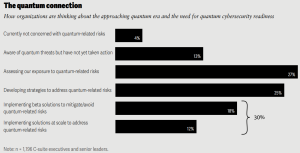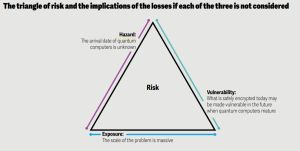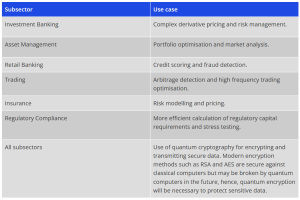Quantum Computing

Key Takeaway:
Quantum computing is entering a pivotal acceleration phase, with 2025 declared the International Year of Quantum Science and Technology, by the United Nations General Assembly. While commercial breakthroughs remain on the horizon, urgency around encryption risks is rising. Deloitte warns that only 12% of organizations are prepared for post-quantum threats, despite guidance from global bodies like NIST and ENISA. Europe is ramping up investments to reduce dependency on the US and China, with use cases spanning finance, pharma, and logistics. Achieving quantum advantage will require deeper collaboration, talent pipelines, and infrastructure scaling—shifting from experimentation to ecosystem building.
Trend Type: Technology
Sub-trends: Quantum Computing
Quantum Acceleration
In June 2024, the United Nations declared 2025 the International Year of Quantum Science and Technology (IYQ), commemorating the centenary of quantum mechanics and signaling a coordinated global effort to elevate quantum computing to a new level of strategic priority. As highlighted in the Economist’s Tech Trends, while quantum computing is unlikely to become a full-scale commercial reality in 2025, the year will mark a turning point in global investment, collaboration, and awareness—particularly around its most urgent application: encryption.
Europe is actively responding to this momentum. The Draghi Report, which called for European leadership in quantum, coupled with growing institutional alignment around the IYQ, is prompting increased public and private investment across the continent. In Germany, the government has committed over €2 billion since 2020 and recently opened IBM’s Quantum European Data Center in Ehningen. France is accelerating industrial deployment through companies like Pasqal, now partnering with NVIDIA to develop hybrid quantum platforms (platforms that blend quantum and classical computing). In Spain, the Barcelona Supercomputing Center unveiled the nation’s first fully European-built quantum computer, funded by the Quantum Spain program. According to PatentPC (2024), China leads with over $15 billion in quantum government funding, followed by the U.S. with more than $3 billion. In contrast, the EU’s €1 billion Quantum Flagship may appear modest, but it reflects a strategic approach focused on sovereignty, standard-setting, and long-term ecosystem development—positioning Europe to reduce its dependency on U.S. and Chinese quantum infrastructure.
From Encryption Risk to Quantum Resilience
While the promise of quantum computing spans industries, the most immediate and widely recognized risk is to cybersecurity. A cryptographically relevant quantum computer (CRQC) could, in the near future, break much of the public-key cryptography that currently secures financial transactions, government communications, and digital identities. According to Deloitte, this risk is not yet being adequately prioritized. A global survey of 1,196 C-suite executives and senior leaders shows that while 27% of organizations are currently assessing their exposure, and 25% are developing strategies, only 30% are implementing any kind of solution—and just 12% at scale. Even more concerning, 13% are aware of the threat but haven’t taken action, and 4% aren’t concerned at all.

Source: Deloitte “The Quantum Connection”, November 2024
As noted by Deloitte Tech Trends, this looming disruption is often deprioritized due to the lack of a concrete arrival date, despite its sweeping implications. The comparison to Y2K is often made (remember Y2K, also known as the “millennium bug”?)—but inverted: the quantum threat is potentially broader in impact, but with an undefined timeline, making preparation harder to prioritize.
As Quantropi CTO Mike Redding puts it, “Quantum may be the most important thing ever, but it doesn’t feel urgent to most people.” Governments are now urging organizations to act before it’s too late. The U.S. Office of Management and Budget and European cybersecurity agencies are issuing guidance on post-quantum cryptography. Standards from USA’s NIST (National Institute of Standards and Technology) and other global institutions are beginning to formalize the technical roadmap—but implementation takes time.

Source: Deloitte - "Triangle of Risk", November 2024
Fortunately, mitigation efforts are gaining ground. The NIST has released new post-quantum cryptography (PQC) standards to future-proof digital infrastructure. At the same time, organizations are exploring quantum cryptography—which uses quantum physics principles to secure communication channels—for even more advanced safeguards. The Future Today Institute reinforces the need to proactively update encryption and identity systems now, not later, as quantum computing moves from lab experimentation to real-world deployment. In Europe, agencies like ENISA and ETSI are also aligning policies to support sovereign encryption capabilities, contributing to a quantum-secure digital ecosystem that doesn’t rely on external vendors or jurisdictions.
The Race for Quantum Advantage
Looking beyond risk, the second defining concept of quantum computing is quantum advantage—the point at which quantum systems outperform classical computers in solving problems with meaningful economic or scientific value. In the financial sector, major institutions are piloting quantum tools for portfolio optimization, fraud detection through quantum machine learning, and significantly faster Monte Carlo simulations, which help assess complex risk scenarios. BBVA, for example, has taken part in the EU co-funded CUCO consortium and signed research partnerships exploring use cases in investment modelling.

Source: KPMG November 2024 - Financial services Use Cases
But quantum advantage is not limited to finance. Fields such as pharmaceuticals, chemistry, logistics, and materials science stand to benefit dramatically. The ability to simulate molecular behaviour with quantum precision could unlock faster drug discovery, more efficient batteries, and even personalized medicine. According to Deloitte, such cross-industry transformation will depend on the maturity of quantum hardware, but also on building a deep talent pipeline and making quantum infrastructure more accessible—areas in which Europe is gaining ground via initiatives like the Quantum Flagship and national R&D investments.
The opportunity is clear: quantum computing could be to the next 20 years what classical computing was to the 1980s. But realizing that potential will require moving from isolated pilots to shared platforms, workforce training, and long-term investment strategies.
Use Cases
Quantum’s Arrival Date: At its annual GTC developer conference Nvidia’s CEO, Jensen Huang, announced the company was opening a quantum research lab in Boston. Quantum computers hold huge potential, with experts saying that they could transform entire sectors. But despite massive advancements in the field in recent years, right now, these quantum computers aren’t able to solve big real-world problems.
The Race of Quantum Advantage: Microsoft has unveiled a new quantum computing chip, claiming it created an entirely new state of matter to make it possible. Experts say the technology could revolutionize problem-solving, from drug discovery to climate solutions, processing calculations in minutes that would take traditional computers septillions of years.
Use Cases
Sub-Trend Sources
Quantum Computing: BBVA Spark Tech Trends, Deloitte Tech Trends, Economist Tech Trends, Gartner: Top10 Strategic Tech Trends, Future Today Institute.
What to Read Next
Embodied AI
Embodied AI and Robotics The integration of foundation models into robotics is revolutionizing how machines interact with the world, enabling them to reason, adapt, and operate autonomously in dynamic environments.[...]
Scientific AI
AI Meets Scientific Discovery A new frontier is opening where AI is not merely a support tool for scientific research—it’s becoming a catalyst for fundamental breakthroughs. This shift was symbolically[...]
Energy Challenge
The Collision of AI and Energy Demand The rise of generative AI is not only transforming digital landscapes—it’s also reshaping the global energy equation. According to Deloitte, the rapid expansion[...]
What to Read Next
Embodied AI
Embodied AI and Robotics The integration of foundation models into robotics is revolutionizing how machines interact with the world, enabling them to reason, adapt, and[...]
Scientific AI
AI Meets Scientific Discovery A new frontier is opening where AI is not merely a support tool for scientific research—it’s becoming a catalyst for fundamental[...]
Energy Challenge
The Collision of AI and Energy Demand The rise of generative AI is not only transforming digital landscapes—it’s also reshaping the global energy equation. According[...]


